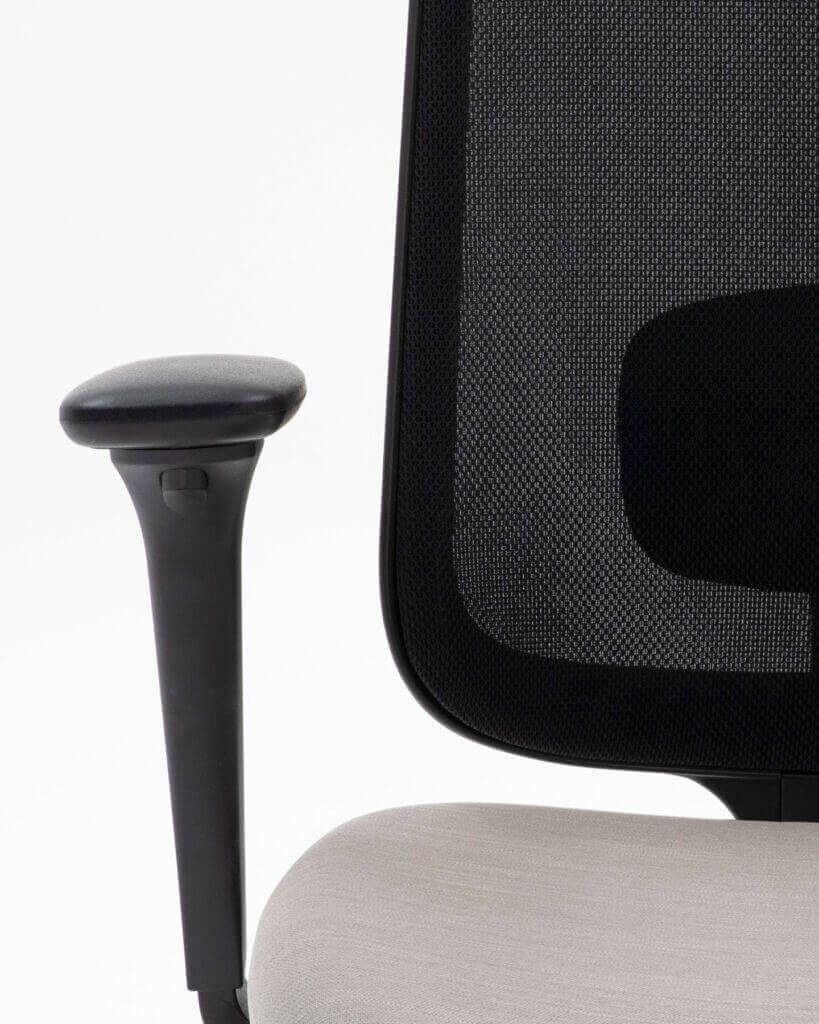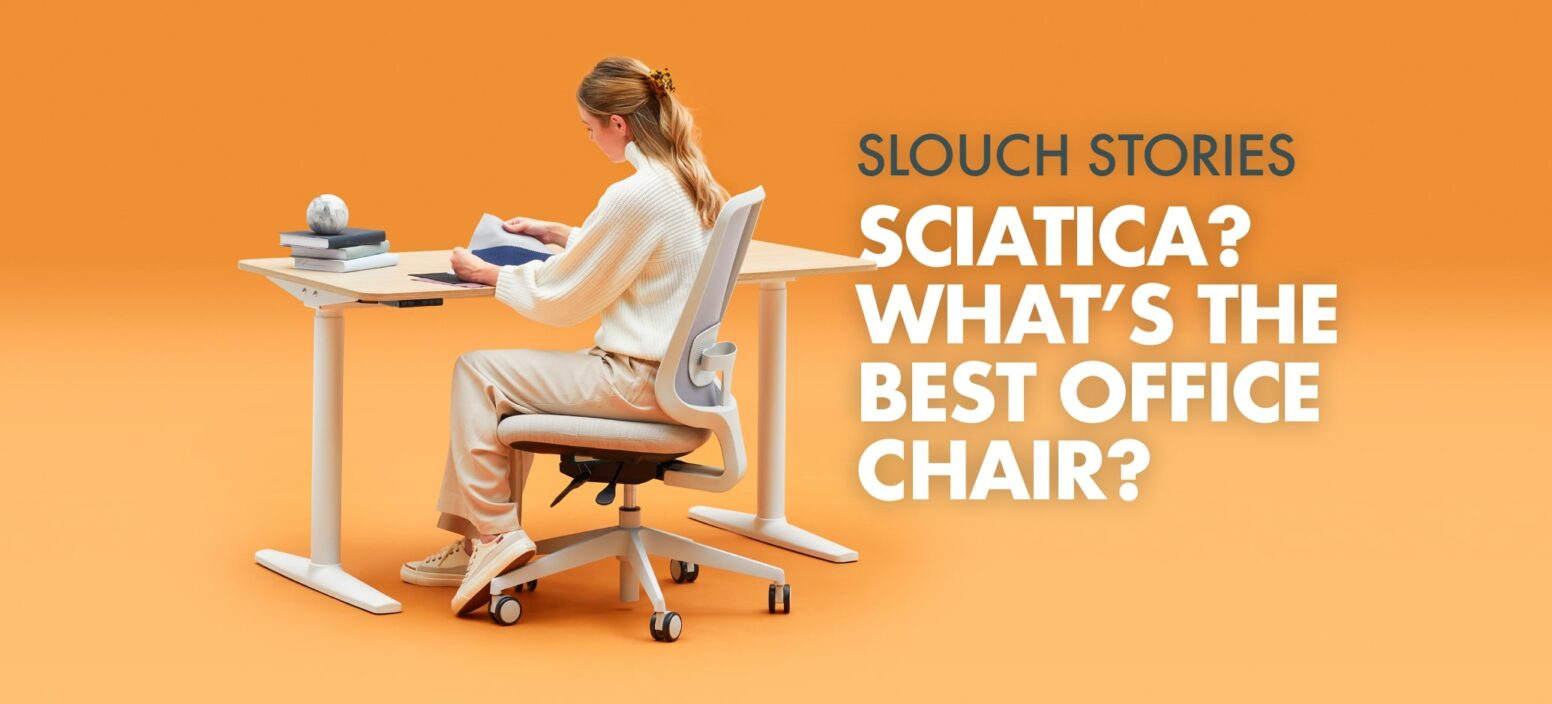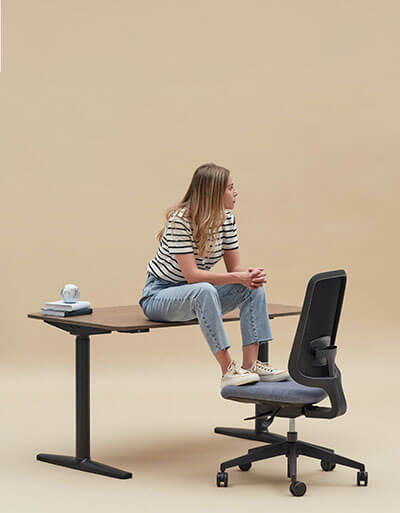The best office chair for sciatica is a common query we see for people In the modern workplace, whether that’s at home or in the office.
Many of us spend extensive hours at our desks. Because our reliance on staying in one spot to get the job done has increased over the years, so too has the significance of ergonomic office chairs to make our lives easier and keep us more comfortable on the job.
This is particularly important for individuals who tolerate a condition called sciatica.
In this guide, we’ll be discussing the various factors to consider when selecting the right chair to alleviate sciatic pain, exploring what sciatica actually is and help you to target all the pain points you need when selecting your next piece of office furniture to make sure you’re getting maximum comfort during work hours.
What is Sciatica?
The sciatic nerve is the longest nerve in the human body, running from the lower back, through the buttocks, and down each leg. The pain associated with sciatica can vary between individuals, you might experience a mild ache, or a sharp burning pain, or unfortunately something worse.
Sciatica can be triggered by a herniated or slipped disc in the spine that puts pressure on the nerves, leading to inflammation, irritation, and pain.
Other potential causes of sciatica include:
- Spinal stenosis (narrowing of the spinal canal)
- Degenerative disc disease
- Spondylolisthesis (a condition where one vertebra slips forward over another)
- Muscle spasms in the buttocks
Other identifiers of sciatica may include pain that radiates from the lower back down the leg, numbness, tingling, or weakness in the affected leg. The pain may worsen with movements like sitting, coughing, or sneezing.
Treatment for sciatica often involves addressing the underlying cause, managing pain with medications, physical therapy, and in some cases, surgery if other less intrusive measures fail. At Slouch, we’re experts on high-quality office chairs not healthcare professionals, so please consult with a qualified healthcare professional for an accurate diagnosis.
Symptoms Sciatica can cause
Here is a list of common symptoms associated with sciatica:
- Pain: Persistent sharp, shooting, burning, or aching pain along the sciatic nerve
- Radiating Pain: Pain that spreads from your lower back or buttocks down the back of the thigh and leg. The pain may extend into the calf or foot
- Numbness and Tingling: numbness or tingling in the leg or foot
- Weakness: Weakness in the affected leg, making it difficult to move or control the leg properly
- One-sided Pain: Sciatica typically affects one leg, and the pain is often more noticeable on one side of the body
- Muscle Spasms: Muscle spasms in the buttocks or leg may accompany sciatica
- Difficulty Standing or Sitting: Pain that intensifies when standing or sitting for prolonged periods, which eases when changing positions
- Lower Back Pain: While the primary focus is on the leg, some individuals may also experience lower back pain, especially if the cause is related to a disc issue in the spine
Remember, these symptoms may be common with sciatica, but they can also be caused by other conditions, so see a healthcare professional for a thorough examination and proper diagnosis.
Getting your hands on office chairs for back pain and sciatica is one of many ways you can try to alleviate the symptoms, by providing adequate support, promoting proper alignment and reducing pressure on the sciatic nerve.
How to choose the best office chair for Sciatica
An ideal office chair for sciatica lies in its adaptability and adjustability. Your chair isn’t there to get in your way, it’s there to facilitate a productive morning (and not to mention help you through the afternoon slog).
Chairs for sciatica should offer easy customisation to minimise strain for people regardless of their body shape, height or individual sitting preferences, and encourage the recommended sitting position as outlined in the Desk Seat and Equipment assessments.
So keep an eye out for chairs which feature height adjustment, tilt mechanisms, and an array of customisable settings, ensuring users can tailor their seating experience to achieve optimal comfort and support throughout the work day. An adaptive chair that minimises stresses on the body isn’t just a good chair for sciatica, but it’s a good example of office ergonomics too.
Lumbar support

Among the most important features to consider in choosing the right chair to manage sciatica is proper lumbar support.
Good chairs for sciatica pain are designed to maintain the natural curvature of the spine, providing essential support to the lower back.
This is because, when sat in a neutral position, the lower part of the back has to support the larger upper curve of the upper back, similar to a question mark. This can cause pressure over the course of the day if you spend a lot of time sitting in one place.
Chairs equipped with adjustable lumbar support allow you to tweak the level of support you need, to allow you to adopt a healthier posture and mitigate pressure on your sciatic nerve.
For instance, Slouch Task Chairs offer ergonomic features like mesh backs, lumbar support, armrests and adjustments, which all work towards accommodating you, (or your employees) in order to feel more comfortable at the workstation. Find out more top tips when buying an office chair in our blog.
Adjustable height
Taller people tend to need more space, in order for their legs and knees to be positioned at a 90 degree angle to the floor to achieve the optimum seating position and minimal strain.
This is most effective with an adjustable desk, which can also fit the legs of taller individuals under their workstation comfortably.
Adjusting height so that your feet comfortably rest flat on the ground with knees maintaining a 90-degree angle reduces sciatic pain because it distributes weight evenly across muscles, minimising undue stress on the sciatic nerve and prevents pressure on other joints too like the hip and knee.
Adjustable seat depth
Going hand in hand with being taller, larger people tend to typically require more space on a seat to allow them to sit in a manner which is aligned with their spine – this is to avoid them perching on the edge of a seat to compensate.
It also ensures their centre of gravity when sat down is central to the chair seat, providing proper support. This avoids pulled muscles and strains from the sitter holding themselves awkwardly over the course of the day.
Armrests

While not necessarily the first thing you’d think about when alleviating pain in your back, armrests play a pivotal role in maintaining your comfort during prolonged periods of sitting.
For those seeking the best office chair for sciatica, adjustable armrests help reduce strain on your shoulders and neck, providing a touch of extra support for the spine by more evenly distributing a portion of the weight of your upper body instead of it all resting entirely on your spine, and contributing to a more comfortable sit. If you’re on the hunt for high-quality office desks as well, your chair armrests shouldn’t clash with the table either.
Swivel mechanism
The easier it is to reach your necessary equipment or turn to other people or different tasks, the more your chair is facilitating your day and the less you have to strain against it.
Can you imagine having to scrape metal chair legs against wood or carpet to have a discussion with someone? We couldn’t.
When searching for the best chair, if it lacks a swivel capability it won’t adapt to your movement. As you move hundreds of times a day sometimes without thinking, they can cause a build up of pressure as your uncooperative office chair quietly taxes your muscles and joints and your sciatic pain is likely to be aggravated as a result.
Base manoeuvrability
An often-overlooked aspect is a chair’s manoeuvrability. The easier it is to reach your necessary equipment or turn to other people or different tasks by moving backward or side-to-side with smooth wheel movement. Jarring wheels or a weak base could prove to be more of an obstacle or bow on one side and throw off your hip alignment. This misalignment can put pressure on the wrong places and trigger your sciatic pain.
On the hunt for the best chair for Sciatica
Making sure your home office keeps you pain-free and comfortable is what drives us at Slouch. High-quality home office furniture you can rely on to meet your needs.
If you want to invigorate your home office by buying a new office chair, or you’re an office manager looking to renew your work-from-office experience and provide the best office chair for sciatica to help your employees, fill out this contact form today. Feel free to email us at [email protected] and we’ll be in touch to assist you with general enquiries too.

